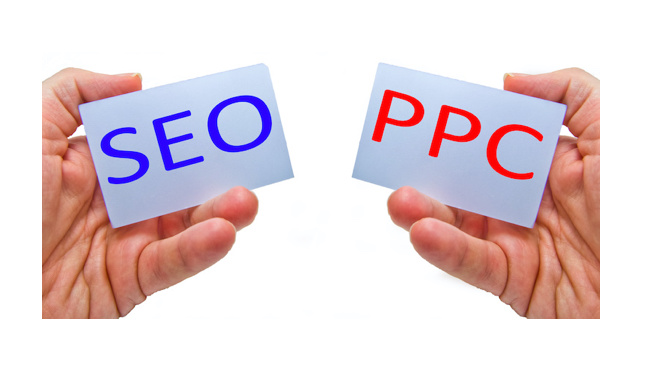Website Lead Capture for Manufacturers, Complex Websites
People will find your website in many ways. They may find it through a blog that was found in a Google search. They may click on a pay-per-click...
4 min read
 Kevin Page
:
August 30, 2017
Kevin Page
:
August 30, 2017
Ultimately, we all need to drive more business — sales teams are always asking for more opportunities, and marketing needs to deliver. So, as a marketer, what do you do? Do you focus on driving more traffic to your website or focus on converting more of the traffic already visiting the site? In a perfect world, the answer would, of course, be both. But, sometimes that just isn’t the reality.
Boosting your website's traffic and conversion rates isn't something that's just going to magically happen. It takes a lot of hard work, data analytics, testing and a little bit of luck. Especially if you are strapped for resources, it can be hard to decide where to focus your efforts first.
So, which one is more important traffic or conversion rate? Well… frankly, it depends. You have to start by identifying which area you’re weaker in.

 If you can relate to any of the signs above, you may have an issue with the number of visitors you’re bringing to your website. Now what? Start with this simple process:
If you can relate to any of the signs above, you may have an issue with the number of visitors you’re bringing to your website. Now what? Start with this simple process:
For example, if you’re struggling with traffic from organic search, focus on the content you’re creating.
Start by establishing [or recreating] buyer personas for your business to construct guidelines for your content. Your buyer personas should drive all of your messaging, including web copy, social media messaging, video content, etc. When you write, make sure your writing addresses the challenges and motivations of your target audience above all else. But don’t forget to utilize keywords for linking, meta-descriptions, and alt-text where appropriate.
Pro tip: Redistribute your most effective content via your social accounts. By effective, I mean content that has converted readers to contacts. If you don’t have any content that has accomplished that goal, redistribute information that solves problems for your audience as opposed to press releases covering a new acquisition within your company.

If you can relate to any of the signs above, you may have an issue with your website’s ability to convert visitors to leads. So what can you do and where do you start? Aside from the obvious -- broken links, slow load time, and other issues along those lines -- the tips below should help you get started.
First, does your website do a good job of telling the story of your business? Unless you’re Google, your homepage should tell visitors who you are, what you do, and who you do it for. And it should be easy for them to understand and process that information. Start with the homepage and spiderweb out from there to ensure your website tells your story.
Second, map out how you’d like web visitors to engage with and travel through your website. Are any of your pages dead ends? Meaning no links, CTAs, or consideration for the next appropriate page to send that visitor to.
Then, I’d suggest a simple audit of the conversion opportunities on your website. How many forms do you have? Which forms are working well and which aren’t?
Next, identify what you are missing? Do you have conversion opportunities for different stages of the sales funnel (top, middle, bottom)? Or, is the only form you have on your website a “Contact Us” form? After identifying what you’re missing, prioritize those by ranking them from most crucial to your business to least crucial.
Remember, to a visitor on your website, their contact information is their currency. Consumers today know from experience that entering their contact information means they will get a follow-up email. Make sure that your offers are worthwhile to your prospects and potential customers. If your visitors don’t feel like your information will help them do their job better, they’re not going to give away their valuable digital currency.

Finally, make the necessary revisions to your site and introduce anything you’re missing (most crucial first). This will probably require you to change some web copy, add CTAs to web pages, and construct new landing pages/forms.
It’s as easy as that! Alright.. so maybe it’s not that easy. It might actually be difficult and take you a lot of time. That’s OK! It’s worth the time and it will provide you with results if executed correctly.
Pro tip: Don’t be scared to ask prospects and customers for feedback. Ask them why they didn’t convert on certain offers. Sometimes, we are too close to the problem. Reach out to people outside of your organization to help see things in a different light.
If you’re weak in both areas, focusing on conversion is more crucial to the success of your business. I know... earlier in this post, when I asked the question of importance between the two, I said: “it depends.” I still stand by that!
However, if you’re driving a low number of visitors to your website and generating a low number of leads as a result, you’re still generating leads.
The alternative, if you don’t prioritize your conversion problem, is driving boatloads of visitors to your site and converting zero new leads. There is a real possibility of that happening if you’re not setup properly for conversion.
It’s about identifying the parts of your strategy that need improvement, prioritizing those areas based on the goals and health of your business, and implementing tactics to enhance those shortcomings.

People will find your website in many ways. They may find it through a blog that was found in a Google search. They may click on a pay-per-click...

Most marketers struggle to increase traffic to their websites, as there are a lot of ways to get from "point A to point B."

Generating new, qualified leads is crucial for sustaining and growing revenue. In the constantly changing world of digital marketing, your website...